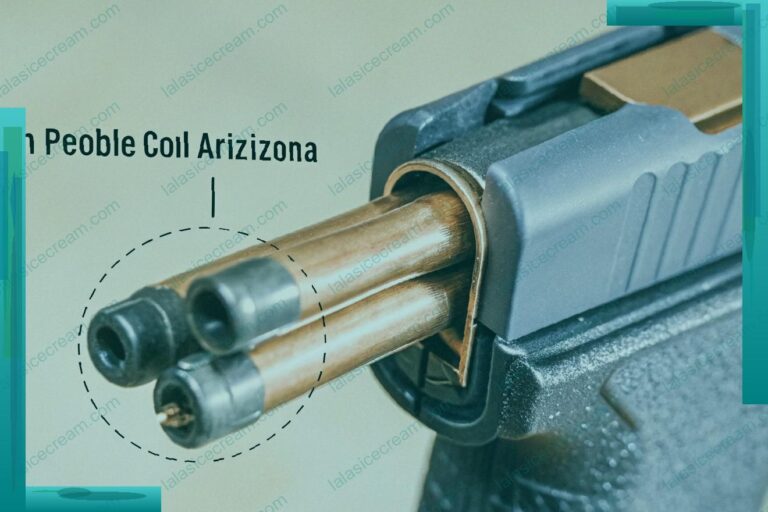Table of Contents
- Understanding Concealed Stun Gun Laws in Your State
- Key Legal Requirements for Registering Concealed Stun Guns
- Common Exceptions and When Registration Is Not Required
- Practical Tips for Compliance and Safe Carry Practices
- Future Outlook
Understanding Concealed Stun Gun Laws in Your State
When it comes to carrying a concealed stun gun, the legal landscape across the United States is anything but uniform. States differ significantly in their regulations, ranging from outright bans to permissive laws that allow concealed carry without registration. Understanding these nuances is crucial to avoid legal pitfalls. Some states may require you to obtain a special permit or register your stun gun, while others treat it similarly to other personal defense tools without additional paperwork. Additionally, local municipalities can impose their own restrictions, so it’s important to check both state and city laws.
Key factors to consider include:
- Registration Requirements: Some states mandate that concealed stun guns must be registered with local law enforcement to be legally carried.
- Permit and Licensing: In certain areas, carrying a stun gun concealed requires a permit analogous to a concealed carry license for firearms.
- Age Restrictions: There might be minimum age requirements for possession or carry of stun guns.
- Restricted Locations: Even with legal carry, stun guns are often prohibited in schools, government buildings, and other sensitive areas.
Key Legal Requirements for Registering Concealed Stun Guns
Before carrying a concealed stun gun, understanding the legal landscape is crucial. Regulations can vary dramatically from one jurisdiction to another, often encompassing restrictions on who can possess or carry these devices. Many states require background checks or limit ownership to individuals above a certain age. Additionally, some areas stipulate that users must acquire a permit or license, similar to firearm regulations. Failure to comply with these laws can result in hefty fines, confiscation of the device, or even criminal charges.
- Registration: Some states mandate formal registration of concealed stun guns with law enforcement authorities.
- Permits: Obtaining a concealed weapons permit may be required, often after completing safety training courses.
- Restricted Areas: Carrying stun guns might be prohibited in certain government buildings, schools, or private properties.
- Prohibited Persons: Individuals with criminal records or restraining orders may be disqualified from owning or carrying stun guns.
To avoid legal pitfalls, always verify local and state regulations before acquiring or carrying a concealed stun gun. Consulting with legal professionals or law enforcement can provide clarity on registration requirements and permissible use cases. Staying informed ensures not only compliance but also responsible and safe self-defense practices.
Common Exceptions and When Registration Is Not Required
While many jurisdictions have stringent regulations regarding stun guns, there are notable exceptions where registration isn’t mandatory. Typically, these exemptions apply to individuals who use stun guns strictly for self-defense and do not carry them across state or city lines where laws might differ. For example, certain states classify stun guns similarly to traditional personal defense tools, allowing possession without registration if you are of legal age and have no criminal record. Additionally, law enforcement officers and military personnel often enjoy exemptions under federal or state laws due to their professional responsibilities.
It’s important to remember that exceptions can often include:
- Use of stun guns on private property with owner consent
- Possession during approved self-defense training courses
- Temporary transportation between locations within a single legal jurisdiction
Practical Tips for Compliance and Safe Carry Practices
When carrying a concealed stun gun, understanding and adhering to local laws is paramount to avoid legal complications. First, always verify if your state or municipality requires registration for stun guns, as requirements can vary widely. Beyond legal compliance, it’s crucial to ensure the device is kept secure yet accessible-consider carrying it in a holster or a dedicated pocket designed for easy retrieval, rather than loosely in a bag or pocket. Regularly reviewing and staying updated on state laws, changes in regulation, and your local jurisdiction’s stance on stun guns can help you stay compliant and avoid unintentional violations.
Safety should never take a backseat; always practice responsible handling and use. Before carrying your stun gun, familiarize yourself with its operation-test the device (without activation on any surface) and understand the safety mechanisms to minimize accidental discharge. When in public or in sensitive areas such as airports or schools, respect posted restrictions and avoid carrying the device where it’s prohibited. Implementing routine checks on your stun gun’s condition and battery life, coupled with maintaining discreet and confident carrying habits, will ensure you are prepared to defend yourself effectively and lawfully.
Future Outlook
In conclusion, understanding whether you need to register a concealed stun gun largely depends on your local and state laws, which can vary significantly. Staying informed about these regulations not only ensures you remain compliant but also promotes responsible ownership and use. Before purchasing or carrying a stun gun, take the time to research your area’s specific requirements or consult with legal experts if necessary. By doing so, you can protect yourself legally while benefiting from the security and peace of mind that a concealed stun gun can offer. Stay safe, stay informed, and always prioritize responsible self-defense.Check Our Other Blogs
- StunGun – Your Trusted Source for Stun Guns, Laws, and Self-Defense Tips
- PepperSprayLaws – Your Trusted Resource for Pepper Spray Information
- StunGunLaws – Your Trusted Guide to Stun Gun Legality and Safety





